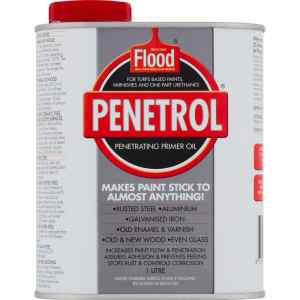Care instructions for Powder Coated Items
A lot of thought, effort and care goes into designing and making your products. Regular maintenance of your powder coated product helps to keep them looking good. Over time, as powder-coated items are exposed to the elements, they may begin to lose their gloss, develop chalking, or even fade. To prevent this and keep the coating in good condition, regular cleaning is essential, as it removes dirt, grime, and other harmful buildup.
The location and environment dictates how often you need to clean it.
Industrial and coastal areas expose items to higher levels of corrosion. Clean the surface every six months to prevent damage. Surprisingly, sheltered items are more vulnerable to deterioration than those that are exposed. Rain washes away pollutants like wind-blown salt and bird droppings, that accumulate on the surface. Inspect your item and clean if necessary on a more regular basis.
Clean items in rural or urban areas annually.
To clean your powder coated item:
- Use a solution of warm water and a nonabrasive, pH neutral detergent solution. The solution is too harsh if you find you have to wear gloves.
- Rinse the surface thoroughly after cleaning, to remove all residue.
- All surfaces should be cleaned using a soft cloth, sponge or a soft natural bristle brush.
Touching up Powder Coating
Powder coated gates may develop chips or rubs with daily wear and tear. Follow these steps to refresh your item:
- Choose high-quality touch-up powder coat paint in the same colour. Read the instructions. Avoid water-based paints. If unsure, ask a paint shop.
- Place the gate in a well-lit area, away from anything you don’t want overspray on.
- Wipe damaged areas with a clean cloth to remove dust.
- DO NOT use solvents or thinners, as they dissolve the coating and ruin the finish.
- Carefully remove any loose powder coat chips.
- Apply several light coats spraying from about 30cm away. Let it dry well between coats. Thin coats prevent drips and streaks.
- When dry, re-install the gate .
Care instructions for unpainted Pre-Galvanised pipe products
We manufacture unpainted pipe garden arches, and pipe and mesh gates from pre-galvanised materials. Consequently these products are resistant to rusting. However, the welds and wrought iron ornamentation made from non-galvanised steel, like those on the Victorian gates, are prone to rust break through. The heat from the welding process breaks down galvanising in these areas.The scrolls on the mesh and scroll gate range are made from stainless steel, however, when in a corrosive atmosphere, like a coastal region, they will rust prematurely. We recommend you follow the cleaning schedule above, to remove build up of corrosive dirt and grime.
We apply a zinc rich paint to rust prone areas like welds. Depending on the environment items can develop rust fairly quickly in these vulnerable spots. This will not affect the structural integrity of your item, but some people find rust breakthrough unsightly. If rust worries you, apply a light spray of a zinc rich paint such as ‘Cold Galv’ to the area. How often this is applied depends on the environment in which you live. Some areas may require a coat or two be applied, say 3 monthly. Apply less frequently in areas that are not as corrosive.
For extra protection we recommend powder coating to give you a more resistant finish. (Please note powder coating does not ‘rust proof’ your item). If you like the rusty look there is a colour called ‘Corten’ which looks like rust.
Care instructions for Rusty Items
Rust forms naturally as iron oxidises. Corten steel will develop a stablised rusty surface. Mild steel deteriorates if not protected. Wet weather may cause rust stains on nearby surfaces.
To slow rust:
- Every 6–12 months, apply ‘Penetrol,’ available at hardware stores. Read and follow the instructions. Coastal areas may need applications every three months.
- Where rust is intentional, we are not responsible for rust-related damage.

Penetrol used for sealing and protecting rusty gates & garden items
To rust newly made steel items we suggest that you:
- Weather the product outside so it reaches the patina you want.
- Lightly rub off loose rust with fine steel wool. Do not polish to bare steel.
- Apply Penetrol generously with a soft brush or spray can. Ensure it reaches:
- Nooks and crannies
- The underside of the item
- Areas where water collects, like scrolls or horizontal bars
- Seal with 2-3 coats of Penetrol.
- Dispose of rags carefully, as Penetrol is highly flammable.
For general maintenance, start from step 3.
